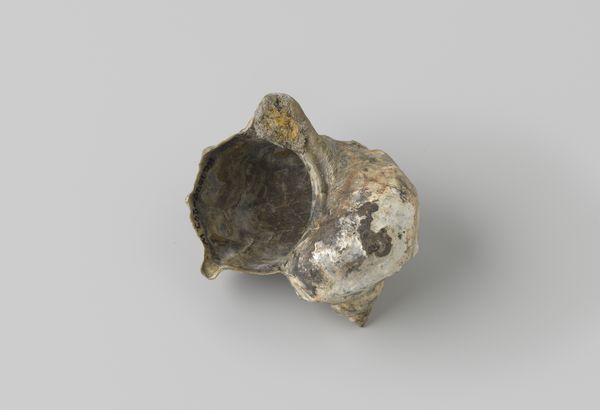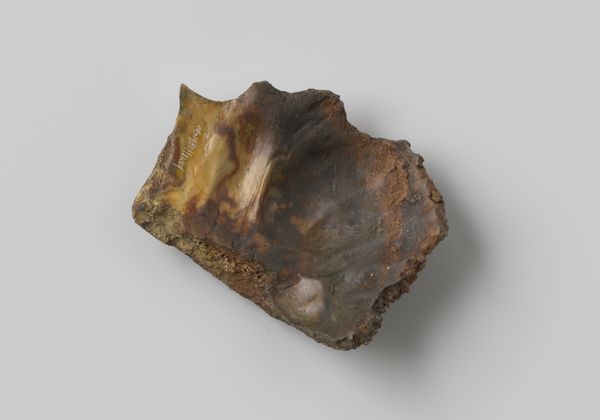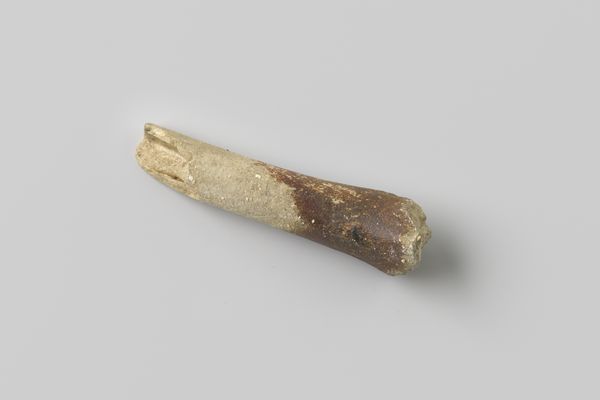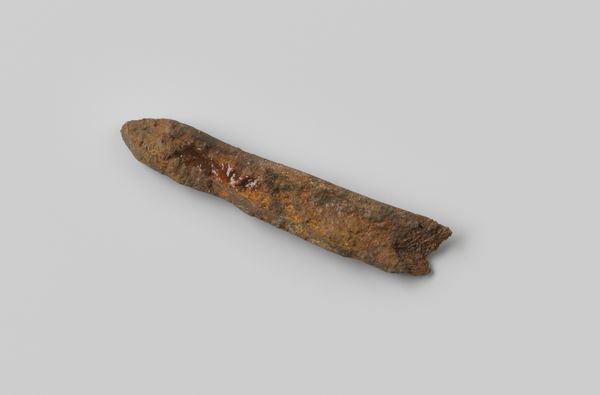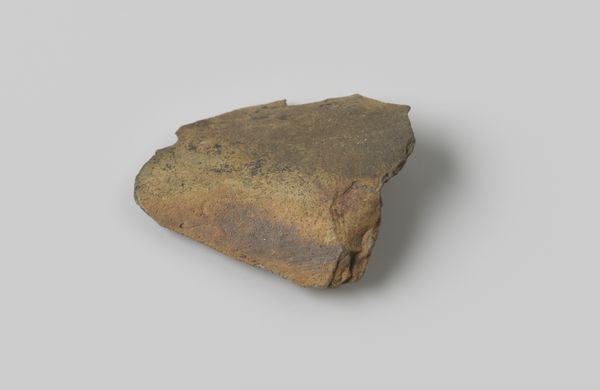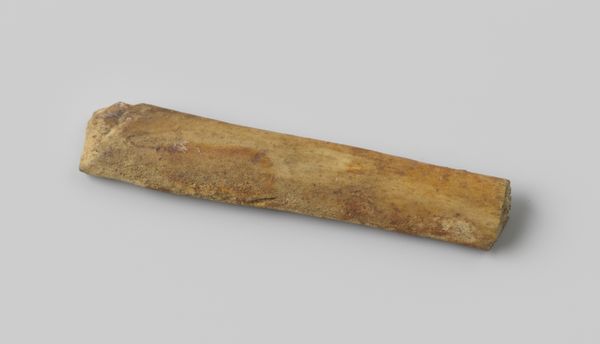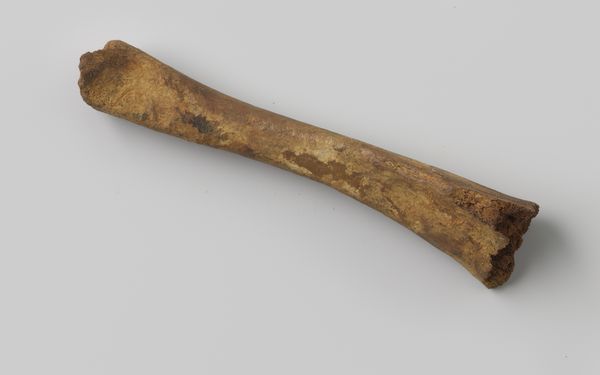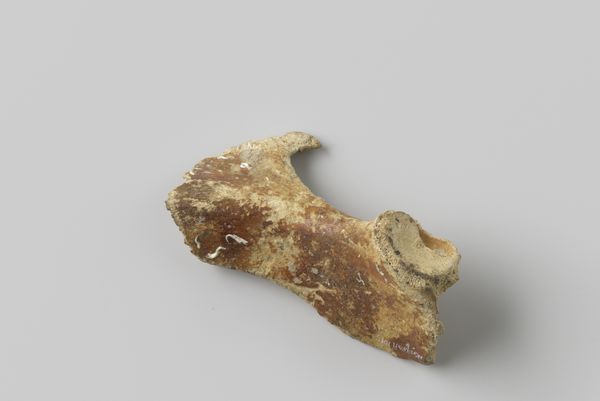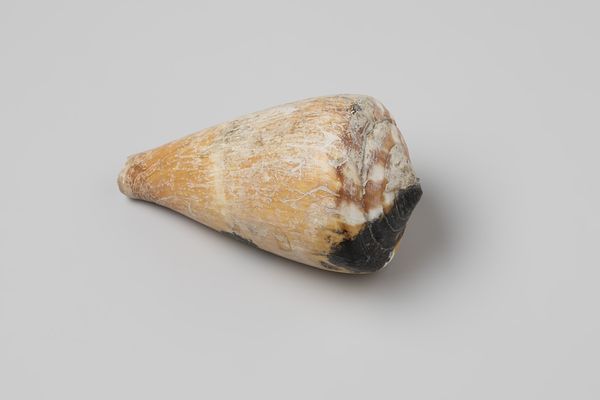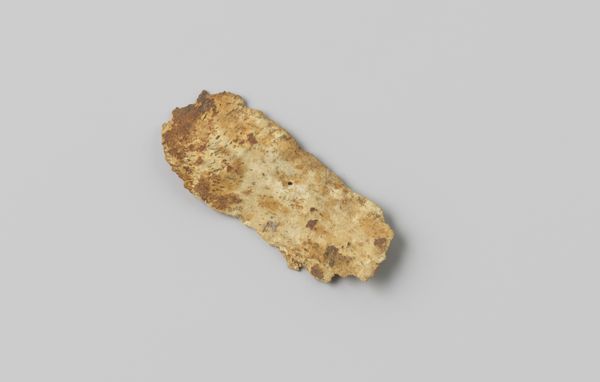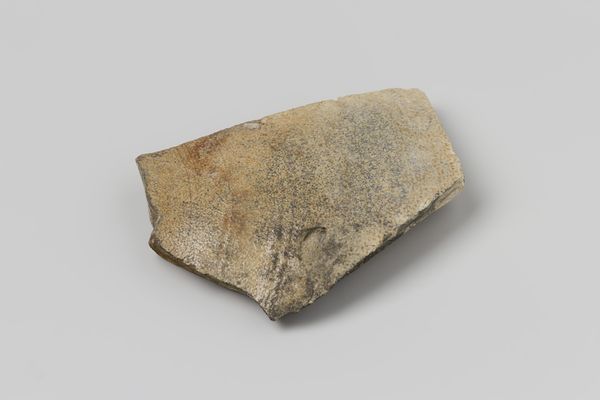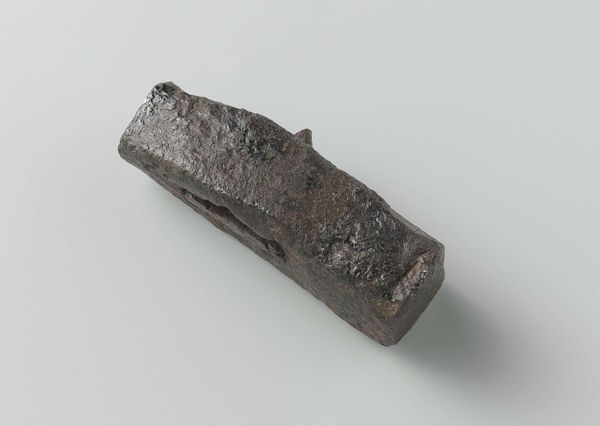
Fragmenten hielbot van een varken uit het wrak van de Oost-Indiëvaarder Hollandia before 1748
0:00
0:00
mixed-media, assemblage, found-object, sculpture, wood
#
mixed-media
#
assemblage
#
found-object
#
ancient-mediterranean
#
sculpture
#
wood
Dimensions: length 6.9 cm, width 2.3 cm, depth 1.9 cm, height 1.7 cm, diameter 2 cm
Copyright: Rijks Museum: Open Domain
Editor: So, here we have "Fragments of a pig's heel bone from the wreck of the East Indiaman Hollandia," dating from before 1748. It’s at the Rijksmuseum, an intriguing…assemblage, really. What strikes me is its almost accidental beauty, given its history. What can you tell me about it? Curator: Well, let's consider what this object truly is: a discarded element, a food waste product, unearthed from a specific historical tragedy. It speaks volumes about the logistics, provisioning, and even the social hierarchies aboard the Hollandia. This fragment offers a tangible connection to the labor and the often-brutal realities of seafaring life in the 18th century. It’s not just bone; it's a residue of consumption, revealing patterns of resource allocation. Editor: Consumption is a good point, though a little morbid to consider what it sustained. In any case, why put this on display? Curator: Precisely, why is this artifact now displayed in the pristine galleries of the Rijksmuseum? The transition of such a humble item, once destined for disposal, into a curated object within a museum provokes essential questions about value, history, and the social frameworks of collecting. What transformative act elevated a common bone to this new status? Editor: I never considered this bone being here is something akin to being an elevated artifact; it gives value to its context. Are you saying we shouldn’t dismiss it just as "an old bone"? Curator: Absolutely. Analyzing how material remains like this illuminate the wider systems of production, exchange, and consumption is the true focus of art history. We could even view its salvaged status as a potent statement about labor – both that of the pig and the sailors, and then that of the restorers. The "mixed-media" aspect, a categorization it carries on the gallery tags, reflects layers of interaction and change to this bone through the past three centuries. What are your final thoughts on this work? Editor: It does put things in perspective, how we choose what’s worthy of remembering through the act of artistic display. I'll remember to view the ‘what’ differently going forward. Curator: That’s it exactly. Each piece has a purpose to teach beyond what we view simply in front of us, which should shape our current art.
Comments
No comments
Be the first to comment and join the conversation on the ultimate creative platform.

